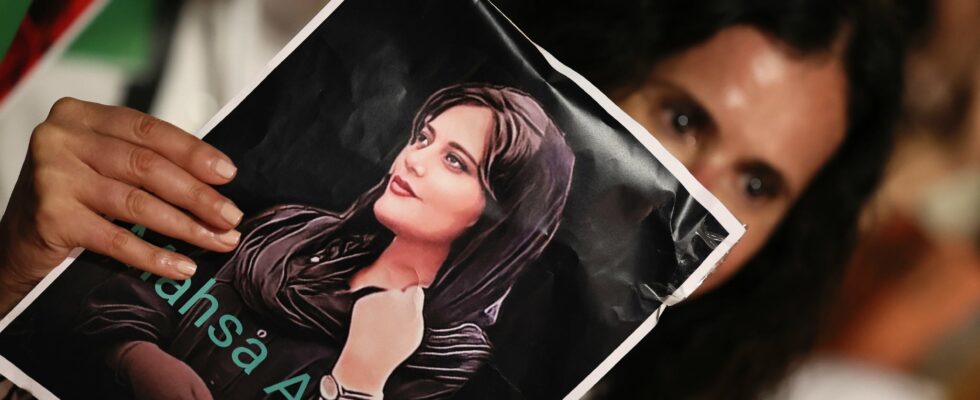Two years ago, a revolution started in a cemetery. A cemetery in the city of Saqez, in the Kurdistan region of northwestern Iran. A region of mountains and rivers, inhabited by a people who, under the law of the Islamic Republic, must silence their language and their differences. From the grave of Mahsa Amini, 22, was born the slogan “Woman, Life, Freedom”, which would spread throughout Iran.
Why this death rather than another, when in contemporary Iran, young women are regularly harassed by the morality police? Perhaps because Jina (her first name in Kurdish) was not claiming anything special, she was just a provincial student visiting the capital, who did not carry a political message and who saw her life shattered by the relentlessness of the authorities. For a veil that has become obligatory since the Islamic revolution of 1979 in Iran.
Two years later, the spirit of this movement that for the first time removed the veil from women in the Islamic Republic has not died out. There remains a generation that refuses to comply with the obsolete laws of a regime that has been in power for 45 years, and which now represents only a small fraction of the population. There remain videos of young women unveiling themselves and sharing them on social media, and images of which are regularly shared by activists in exile, such as Masih Alinejad. There remains a 2023 Nobel Peace Prize winner, Narges Mohammadi, whose health is deteriorating and who is being denied care.
To commemorate the death of young Mahsa Amini, thirty-four women from Evin prison in Tehran, where political prisoners are held, went on hunger strike. Linked to the protest movement, they are facing increased harassment, as noted by academic Iris Farkhondeh, a lecturer and researcher at the Sorbonne Nouvelle. Another intimidation technique: the refusal of the right to visit and contact with loved ones. This is the case of Narges Mohammadi, who cannot communicate directly with her husband and children. Many former detainees have also testified to the rapes and sexual assaults they suffered in prison.
Hangings and harassment
If the movement is not experiencing the massive demonstrations of two years ago, it is also because the Islamic regime is making unlimited use of its most radical weapon, the death sentence, to counter the demonstrators. The case of rapper Toomaj Salehi was covered internationally, but many prisoners are executed without a hitch. Minorities, such as the Baluchis, who are very active in the 2022 movement, and the Kurds, are particularly targeted, highlights Iris Farkhondeh, who closely follows the information coming from Iran to disseminate it on social networks.
Journalists are also particularly targeted. The emblematic case is that of the two reporters who revealed the Mahsa Amni affair: Elaleh Mohammadi and Niloofar Hamedi. As Jonathan Dagher, the head of the Middle East desk of Reporters Without Borders, points out, they were released on bail but are still under threat of re-imprisonment and know nothing about their future. Local journalists are subject to harassment and increased surveillance, which prevents any free reporting. This is also the case for foreign journalists, whose arrival is strictly controlled.
For sociologist Mahnaz Shirali, “the appearance of calm in Iran today is false. At any moment, society can explode.” But this explosion does not necessarily mean an overthrow of the regime, because it remains structurally well established, notably by possessing the economic levers. And also because the international community, concerned about the Iranian nuclear program, refuses to take radical positions, such as placing the Revolutionary Guards, the regime’s militia, on the list of terrorist organizations. And this despite the proven support of the Islamic Republic for Hamas, the Houthis, who destabilize world trade in the Bab El-Mandeb Strait, and the Lebanese Hezbollah.
Today, Iranian authorities even monitor cemeteries, or take time to return the bodies of those executed. To avoid any gathering at the graves. For fear that another revolution born from a cemetery will shake the anachronistic edifice of the Islamic Republic.
.
